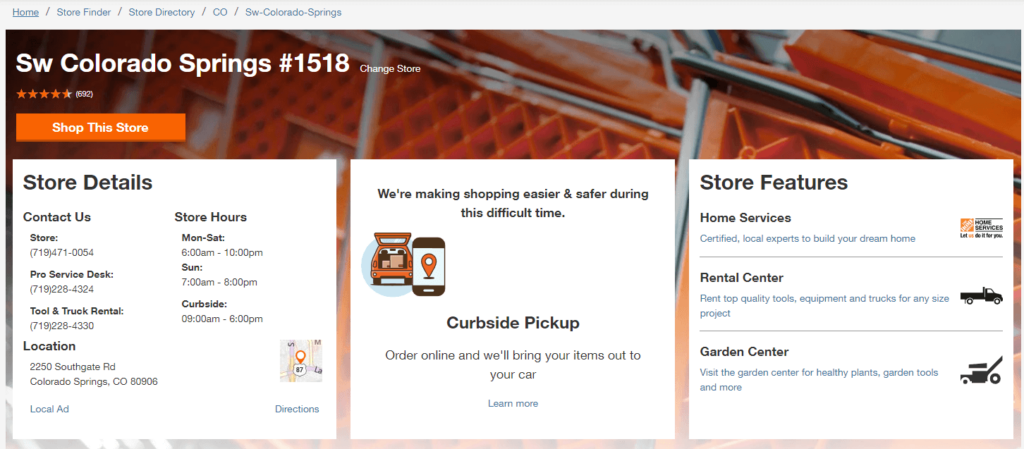I’m going to answer a couple of questions that have come up recently regarding SEO and multiple-location companies.
The two main topics today are website SEO and local SEO.
How can you use them together to increase your digital footprint?
Utilizing Google Business Listings – Franchise Specific
Should you choose different business names depending on location or keep the same name in all listings?
Google says to keep it the same!
Name consistency
All business locations within the same country must have the same name for all locations. For example, all Home Depot locations should use the name “The Home Depot” rather than “Home Depot” or “The Home Depot at Springfield”.
https://support.google.com/business/answer/3038177?hl=en#zippy=%2Cchains-brands
There’s more that Google covers for multiple locations in that link, but we’ll move ahead as this is just some quick tips.
Let’s See an Example
Home Depot has a “Store Finder” that will bring you to a landing page that is location specific. The local phone number, local hours, and a way to get directions to this location.
If you search for Home Depot in your browser, it’s going to bring up the closest one in Google Maps and take you to this corresponding page.
https://www.homedepot.com/l/Sw-Colorado-Springs/CO/Colorado-Springs/80906/1518

Include Location-Specific Keywords
National search used to differ more than local search a lot, but it’s slowly starting to evolve.
People used to (still do, but also used to) type “plumber near me” to help narrow the search results down to someone who could actually help.
It was useless to get a good SEO plumber 3 states away. Googe recognized that.
Now people are relying on Google’s location algorithm to determine what plumbers are closest AND who can actually help.
This removes the need to type “near me”, but it’s still not obsolete yet.
Location-specific keywords are going to include city/state/area even if the user is not directly searching for a “plumber in denver, co”.
Adding area keywords in your description is going to help how we tie the website in.
Tie Website SEO to Local SEO
How Google determines your local ranking factor in the maps is based on several things, but here is one of note.
Prominence refers to how well known a business is. Some places are more prominent in the offline world, and search results try to reflect this in local ranking. For example, famous museums, landmark hotels, or well-known store brands are also likely to be prominent in local search results.
Prominence is also based on information that Google has about a business, from across the web, like links, articles, and directories. Google review count and review score factor into local search ranking. More reviews and positive ratings can improve your business’ local ranking. Your position in web results is also a factor, so search engine optimization (SEO) best practices apply.
https://support.google.com/business/answer/7091?hl=en#zippy=%2Cprominence
This particular ranking factor puts the smaller mom-and-pop businesses at a disadvantage because they are not as prominent in the real world.
We can overcome this by doing better website SEO and interacting more in the local community; see Marketing in a Small Town.
Your website should have a landing page for each location that mirrors Home Depot, Starbucks, and other larger brands.
This way, you can rank for local searches that tie well into your google listing. This will create a better prominence.
Conclusion
This wraps up the quick tips for business owners who have multiple locations.
For a more comprehensive conversation, please feel free to contact us.
